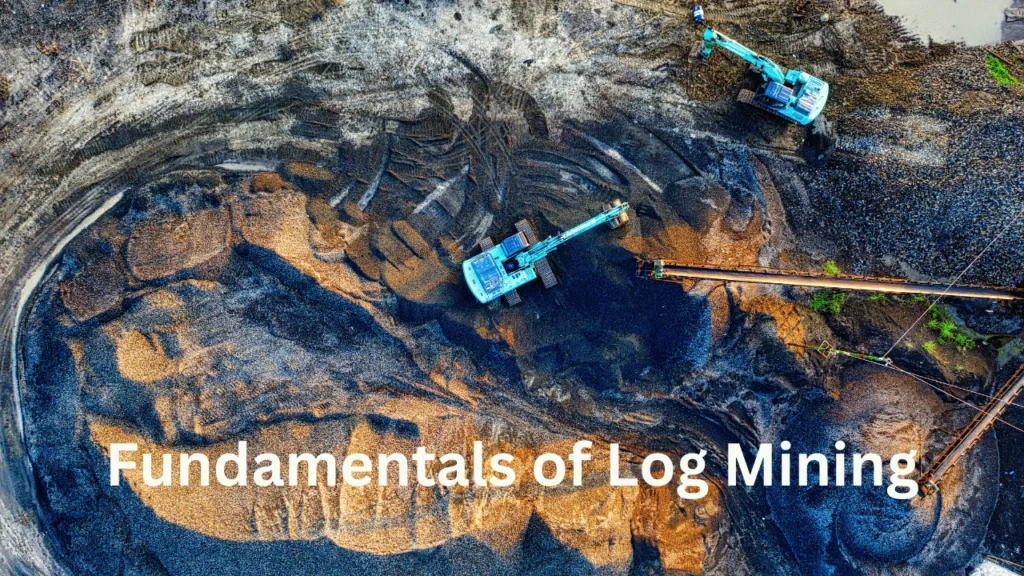Applications, systems, and networks generate enormous amounts of logs, which can be quite chaotic. To make sense of this data, log mining is an essential tool for data analysts and system administrators. Crucial for troubleshooting, improving performance, and strengthening security, this process extracts key insights and identifies patterns. The ability of log mining to transform raw data into meaningful, actionable information is facilitated by the incorporation of sophisticated algorithms, such as statistical analysis and machine learning. Both the dependability and efficacy of IT operations are enhanced by this capability, which is fundamental to root cause analysis through event correlation across diverse sources.
Benefit of Log Mining
Log mining is most useful for those working in information technology, security, compliance, and business analysis. These professionals use log mining to quickly identify mistakes, threats, and anomalies, which improves system security and prevents system failures. Further, by analysing log sequences and timestamps in great detail, log mining is a priceless tool for cybersecurity professionals to detect intrusions and other harmful activities. By providing thorough, time-stamped records of system activities, it also aids compliance auditing, which helps organisations adhere to strict regulatory requirements. Log mining is important because it drives system resilience and improves user experience across many industries, and it is becoming more sophisticated and important as technology changes.
Fundamentals of Log Mining

Understanding Log Data
In log mining, log data is the foundation. This data comes from applications, systems, and networks. Because of its massive size and lack of structure, this data is fundamentally complicated. Therefore, efficient log mining methods should be able to normalise, parse, and analyse these logs to find useful insights. Important pieces of information for the next stages of analysis must be located, and this includes things like timestamps, event types, and error codes.
Advanced Algorithms for Analysis
Advanced algorithms, especially those from machine learning and statistics, are heavily used in log mining. These algorithms excel at finding patterns, outliers, and anomalies in log data, as well as doing predictive modelling. Log mining uses these methods to organise apparently unintelligible log entries into a format that can be used to identify patterns and problems.
Event Correlation and Root Cause Analysis
Event correlation, the process of connecting related events across various log sources in order to identify problem causes, is a major obstacle in log mining. When investigating complicated system failures or security breaches, this is crucial. Using a holistic view of the system’s operation, log mining synthesises data from multiple sources, making problem resolution quicker.
Error Identification and Anomaly Detection
Log mining is highly effective at finding outliers and mistakes in large datasets. Using pattern recognition and machine learning, it can detect when something isn’t right and alert you to possible security or system problems. In order to keep the system healthy and secure, this preventative measure is essential.
Performance Optimization through Log Analysis
Optimisation of system performance is a critical outcome of successful log mining. Information technology specialists can improve system response times and throughput by reviewing logs for inefficiencies and bottlenecks. By guaranteeing optimal resource utilisation, this not only improves the user experience but also reduces operational costs.
Applications of Log Mining in Various Domains

Log Mining in Cybersecurity
When it comes to cybersecurity, log mining is essential for finding and reducing risks. To detect intrusions, fraud, and other harmful activities, security analysts examine log sequences and event correlations. Data breaches and compromised IT systems can’t be prevented without this kind of proactive detection.
Compliance Auditing
Log mining is an excellent tool for auditing compliance for organisations that operate under stringent regulatory frameworks. Organisations can show they are in compliance with regulations and avoid fines and legal trouble by using log mining, which records every system activity with a timestamp.
System Performance with Log Mining
Finding IT system performance bottlenecks and operational inefficiencies is made much easier with log mining. By carefully reviewing logs for any signs of errors or unusual activity, experts can make specific enhancements that boost system reliability and user happiness.
Enhancing Troubleshooting
Log mining significantly simplifies troubleshooting in intricate IT environments. Log mining improves operational efficiency and decreases downtime by speeding up the diagnosis and resolution of system issues through event correlation and error pattern identification.
Challenges and Solutions
Handling Large-Scale Log Data
A major obstacle is the enormous amount of log data produced by contemporary IT systems. Scalable solutions capable of quickly processing and analysing terabytes of data are essential for efficient log mining. Efficiently managing and analysing large-scale log datasets requires the use of distributed computing techniques and optimised data storage solutions.
Real-Time Analysis and Immediate Response
Being able to analyse logs in real-time and respond instantly is vital in today’s fast-paced IT environments. To find and fix problems as they happen with little impact on system performance and user experience, log mining solutions should be able to analyse log data in real-time.
Integrating Log Mining with Other Data Analysis Techniques
Integrating log mining with other data analysis techniques, like data warehousing and business intelligence, is often necessary to obtain comprehensive insights. Better strategic planning and decision-making are made possible by this integration, which provides a more comprehensive picture of system health and business metrics.
Data Privacy and Security
It is critical to protect the confidentiality of log data while it is being mined because of how sensitive it is. To prevent data breaches and unauthorised access, log mining systems should use strong encryption, access controls, and data anonymization methods.
Best Practices for Effective Log Mining
Establish Clear Log Management Policies
Having well-defined policies for managing logs is a prerequisite for effective log mining. What logs to gather, for how long, and to whom are all part of these parameters. The availability and secure handling of data required for analysis, in accordance with legal and regulatory mandates, are guaranteed by these policies.
Advanced Machine Learning Techniques
Log mining can be significantly improved with the help of state-of-the-art machine learning algorithms. Automating the detection of complex patterns and anomalies is possible with these techniques, which can be overlooked by more conventional methods. Organisations can optimise security and performance by training models on historical data, which allows them to predict and prevent future issues.
Integrate Log Mining with Incident Response Plans
Log mining and incident response plans work hand in hand to provide a streamlined process for handling detected threats or anomalies. Integrating these systems allows for faster response team mobilisation, patch application, and remediation based on insights gained from log analysis.
Leverage Visualization Tools for Better Insights
Log data can be better understood by a larger audience with the help of visualisation tools. Graphical representations of log data allow stakeholders to more readily spot patterns, outliers, and spikes. It is much easier to keep an eye on system health and fix problems as they crop up with tools that provide real-time dashboards and heatmaps.
Emerging Trends
The Rise of Predictive Analytics in Log Mining
The use of predictive analytics in log mining is on the rise due to the advancements in technology. By examining both past and present log data, predictive models are able to foretell when a system might fail or a security breach could occur. By taking preventative measures, not only is downtime decreased, but system performance is also enhanced through resource optimisation.
Adoption of Cloud-Based Log Mining Solutions
Log mining is going through a transformation as more and more people opt for cloud-based solutions. When it comes to storing and analysing massive amounts of log data, cloud platforms provide scalable, flexible, and affordable options. You won’t need as much infrastructure or specialised knowledge with these solutions because they usually have analytics built right in.
Increased Focus on Privacy-Preserving Techniques
The development of privacy-preserving techniques in log mining is receiving more attention as concerns about data privacy continue to grow. Safeguarding sensitive information while still extracting valuable insights from logs is achieved through techniques such as secure multi-party computation and differential privacy.
Frequently Asked Questions
What is the main purpose of log mining?
Log mining aims to extract actionable insights from logs to enhance system troubleshooting, performance optimization, and security monitoring. It transforms raw log data into meaningful information through advanced algorithms.
How does log mining support cybersecurity?
In cybersecurity, log mining helps detect intrusions and malicious activities by analyzing log sequences and event correlations. It identifies patterns that signal potential threats, aiding in proactive threat mitigation.
Can log mining improve system performance?
Yes, by analyzing logs for errors and inefficiencies, log mining identifies performance bottlenecks, enabling targeted improvements that enhance system reliability and user experience.
What are the challenges in log mining?
Key challenges include handling large-scale log data, ensuring real-time analysis, integrating with other data analysis techniques, and maintaining data privacy and security.
How is compliance auditing supported by log mining?
Log mining provides detailed, timestamped evidence of system activities, helping organizations demonstrate regulatory compliance and avoid legal and financial repercussions.
Also Read: Gujarat Mining: India
Conclusion
Improve your system’s performance, security, and reliability with the help of log mining, a powerful tool that turns massive volumes of unstructured log data into useful insights. The advantages of log mining can be fully realised when organisations implement transparent policies for log management, employ state-of-the-art machine learning methods, integrate with incident response plans, and make use of visualisation tools. Log mining will be an essential part of contemporary IT ecosystems for the foreseeable future thanks to developments in areas such as predictive analytics, cloud computing, and privacy protection methods.

Brandy Stewart, an enchanting wordsmith and seasoned blogger, weaves compelling narratives that transport readers to uncharted territories. Infused with perceptive viewpoints and dynamic storytelling, Doris exhibits a command of language that enthralls both hearts and minds, leaving a lasting mark on the literary panorama.

